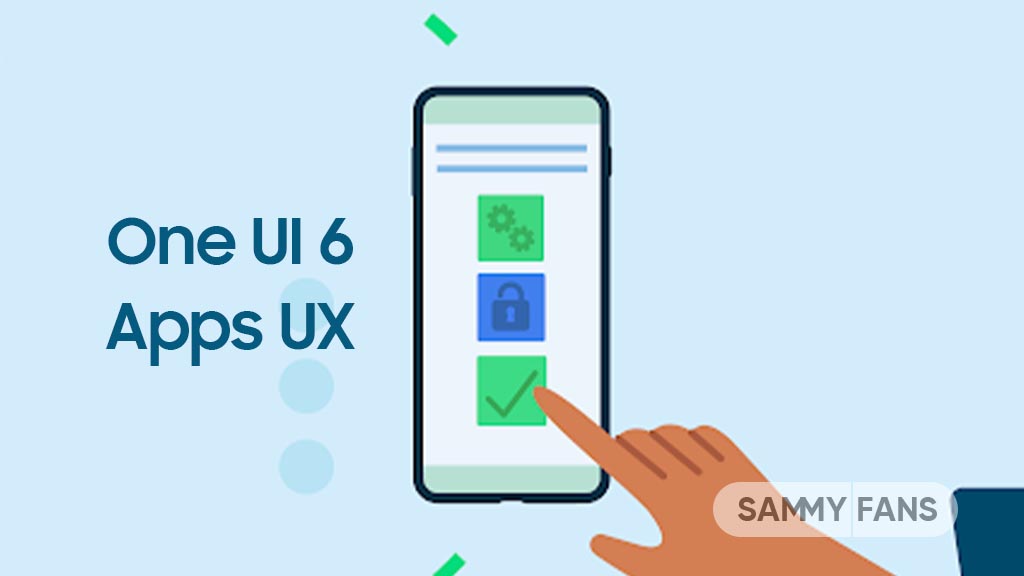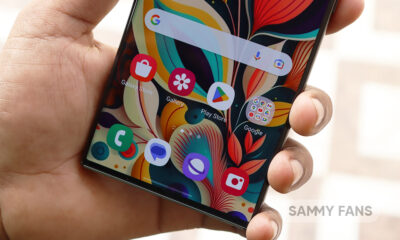Opinion
Samsung Galaxy S20 also deserves ‘Four Android Upgrades’ support!

Samsung announced the Galaxy S20 series devices with support for two major OS upgrades, meanwhile, expanded it to three generations at the Galaxy Note 20 launch event. Well, Samsung is now offering four Android upgrades to its latest and last year’s flagships, and obviously, the 2020’s Galaxy S20 is not on the list.
Launched back in February 2020, the Galaxy S20 is one of the company’s most popular flagship smartphone lineups. This series embeds four models — Galaxy S20, Galaxy S20+, Galaxy S20 Ultra, and Galaxy S20 FE. All of these devices were shipped with Android 10-based One UI 2.x out of the box.
Join SammyFans on Telegram
On February 9, Samsung did a very big statement, forcing rivals to scratch their heads, regarding its software upgrades expansion. At the Galaxy Unpacked 2022, the company confirmed that the Galaxy S22 and Tab S8 series devices will be upgraded to new Android/One UI generations 4 times.
Besides the Galaxy S22 and Galaxy Tab S8 lineups, the 2021’s Galaxy S21 series as well as the Galaxy Z Fold 3 and Galaxy Z Flip 3 are now also compatible with Four major Android upgrades. While the Galaxy S20 and S21 series phones have various similarities, the former line will not be getting any big upgrade for the fourth time.
Android 13 will be the last major upgrade
As you know, Samsung launched the Galaxy S20 series devices two years back with One UI version 2, on top of Android 10. In late 2020, these devices had received the Android 11-based One UI 3 upgrade, followed by Android 12-based One UI 4.0 later last year.
While the Galaxy S20 series don’t have four Android upgrades support, Samsung is still committed to providing the third big update to the devices that will be the Android 13-based One UI 5.0 (tentative name). Despite this, the Galaxy S20 smartphone line also deserves a place in Samsung’s four years upgrade plan. Because
- Upcoming select Galaxy A series devices will get four generations of Android/One UI upgrades
Galaxy S20 deserves OS upgrades — 4 times
If Samsung can provide four big OS upgrades to its upcoming mid-range Galaxy A series devices, then, why can’t offer the same treatment to its just two years old topmost flagship lineup? Consumers purchased the standard Galaxy S20 model at its starting price of $999, which goes up to $1,399.99 for S20 Ultra.
As Samsung is going to introduce its new Galaxy A series mid-rangers in near future, it’s undoubtedly true that those phones won’t be equipped with such powerful processors and displays that we can see in the Galaxy S20 series models.
Hence, Samsung should consider such basic things and can amaze millions of consumers of the Galaxy S20, Galaxy S20+, Galaxy S20 Ultra, and Galaxy S20 FE by bringing an extra Android OS upgrade after the Android 13. What do you think about the new Samsung Android Upgrade Policy?
Feel free to share your thoughts with us in the comments below!
Opinion
Android Updates War: Google’s Game-Changing Move to Outshine Samsung

When it comes to Android updates, Samsung is leading the Android world. However, this could be the last day of Samsung’s leadership as Google is expected to double up its current Android updates support for Pixel smartphones launching today.
2020 was a remarkable year in Samsung’s history when the company extended Android updates support from two years to three. A few months later, the company extended the security support as well, totaling it to four years for flagship Galaxy devices.
Follow our socials → Google News | Telegram | X/Twitter | Facebook | WhatsApp
In 2022, Samsung launched the Galaxy S22 series, which offers four generations of OS upgrades. In its announcement, the company listed all flagships launched in 2021 and later along with select Galaxy A series smartphones for 4 OS and 5 years of security patches.
With this decision, the South Korean tech giant surpassed Google’s support policy, which owns Android. To be noted, Tensor-powered Pixel smartphones come with three years of Android and five years of monthly security updates support.
Today, Google will launch the Pixel 8 and Pixel 8 Pro smartphones. And as per the leaks, both phones will offer up to 7 years of software support, surpassing the longest support provided by Apple to its iPhones. Pixel 8 and later might be eligible for 7 major OS upgrades, which sounds a bit confusing.
There are speculations that there will be five major OS versions and 7 years of regular security patches and quarterly Pixel Feature Drops for the latest flagship smartphones. If it happens, it will force other Android vendors to further extend their support.
While Pixel phones are limited to support 3 major OS versions, Samsung is offering 4 generations of OS upgrades to cheaper Galaxy devices that costs approx $249. Samsung won’t take too long to beat Google yet again in terms of software support.
Let’s see, what Google has to offer to the Android world!
Opinion
Here’s why Samsung apps start getting One UI 6 support ahead of official release

After One UI 5.1, we started hearing a lot of news, leaks, and rumors about the upcoming One UI 6. Recently, Samsung has also started releasing One UI 6.0 support for stock apps, starting with the Calculator app.
Looking at all this, we can expect that Samsung will provide this support to more apps in the future too. But the question is, why is Samsung providing One UI 6.0 support to its stocks apps before the official release? If you are thinking that by getting their support, you will get some new features in your apps, then it is not only the reason.
Samsung One UI 6.0 support can also bring new features for apps, but the main reason for this is something else. But what? The answer is that Samsung is going to release a new One UI update in the coming weeks or months and the company aims to make its stock apps compatible with that accordingly. Once the app is supported, the app will not stop working or get crash whenever the company releases that update for the smartphone.

A recent report revealed that Samsung’s stable Android 14 update will be available in October. This is the same time frame as last year’s UI rollout, with the latest Galaxy S lineup being the first to secure it. Meanwhile, beta activity is seeing an early start if everything goes as planned by the internals.
Still, for the time being, we can consider this information as a pinch of salt as the company has not yet announced any official timeline for One UI 6.0.
Samsung confirms One UI 6 and Good Lock features finding underway
Opinion
Instead of Camera, Samsung should bring battery upgrade to flagships

Nowadays, smartphones are being heavily used for gaming and photography. Accordingly, phone makers are focussing more and more on upgrading the imaging capabilities and performance of chipsets. So why not, Samsung should now bring battery upgrade to Galaxy flagships.
Battery upgrade should be the next aim
The recently launched Galaxy S23 Ultra brings a high-profile 200-megapixel camera, allowing users to capture lossless shots, even when cropped. With great collaboration between hardware and software, the new Samsung flagships offer peace of mind to consumers, when it comes to battery life.
In addition to camera lovers, people prefer buying a smartphone, which offers great battery life without compromising features and power specifications. In the same way, Samsung is reportedly working, and there’s still room for improvements in flagships battery life.
The Galaxy S24 Ultra could come with a new battery technology inspired by electronic vehicles. The company is considering stacked battery technology for smartphones, which will reduce the size keeping the same mAh and enhanced lifespan.
Since the stacked battery tech could leave more gap inside the phone, Samsung might not think about increasing mAh on flagship phones. Instead, the company may use an additional vacant area for upgrading other hardware elements and better placement.
The S23 Ultra even defeated the years-old leader iPhone in terms of battery performance, thanks to the “Snapdragon 8 Gen 2 for Galaxy” processor. Exynos 2400 is reportedly coming to the S24 series in certain markets, which re-creates concern about the phone’s battery life and performance.
That said, Samsung should focus on increasing premium Galaxy phones’ battery life so users can use them longer with a single charge. 45W fast charging is doing quite well, just improvements to battery life would prove as cherry on the cake.
What do you think about it, do share your thoughts with us through the Tweet embedded below.
Vote here: https://t.co/tOfPTuWKX7
— Sammy Fans (@thesammyfans) May 5, 2023
Poll Results: May 12, 2023
We ran a poll that received 106 votes from our readers’ community. Among all, about 70 percent of readers voted in favor of a battery upgrade instead of the camera, while 23.6 percent want both upgrades together. Meanwhile, 6.6 percent of voters still want Samsung to focus on flagship camera upgrade.
Instead of Camera, Samsung should bring battery upgrade to flagships #Samsung
— Sammy Fans (@thesammyfans) May 5, 2023













